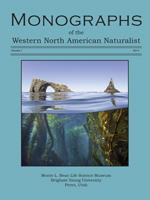Restoring large, complex landscapes can be challenging, especially given that some threats to native diversity and ecological function cannot be wholly eliminated. Santa Catalina Island, California, provides a valuable case study because its challenges include a variety of ecosystem threats, legal restrictions, and cultural attachments, as well as a vocal resident human population that often does not agree with conservation actions. Catalina Island has been highly modified by numerous invasive species, fragmentation and erosion from roads, altered hydrology from dams, and increased fire frequency. In this paper, I build on a previously published review of resources and threats and discuss potential management actions for those threats. Although the island's large size, rugged topography, and pervasive human influence limit management options, several feasible actions could have an important restorative effect. In particular, “bottom-up” invader management may be a relatively noncontroversial way to produce multiple positive outcomes. Reducing fragmentation, restoring natural hydrologic regimes, and augmenting native plant cover could disadvantage invasive plant and animal species while promoting the native flora and fauna.
How to translate text using browser tools
1 January 2014
Ecosystem Restoration on Santa Catalina Island: A Review of Potential Approaches and the Promise of Bottom-Up Invader Management
Denise A. Knapp





